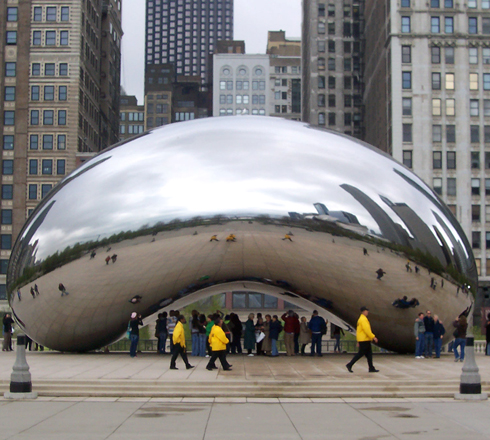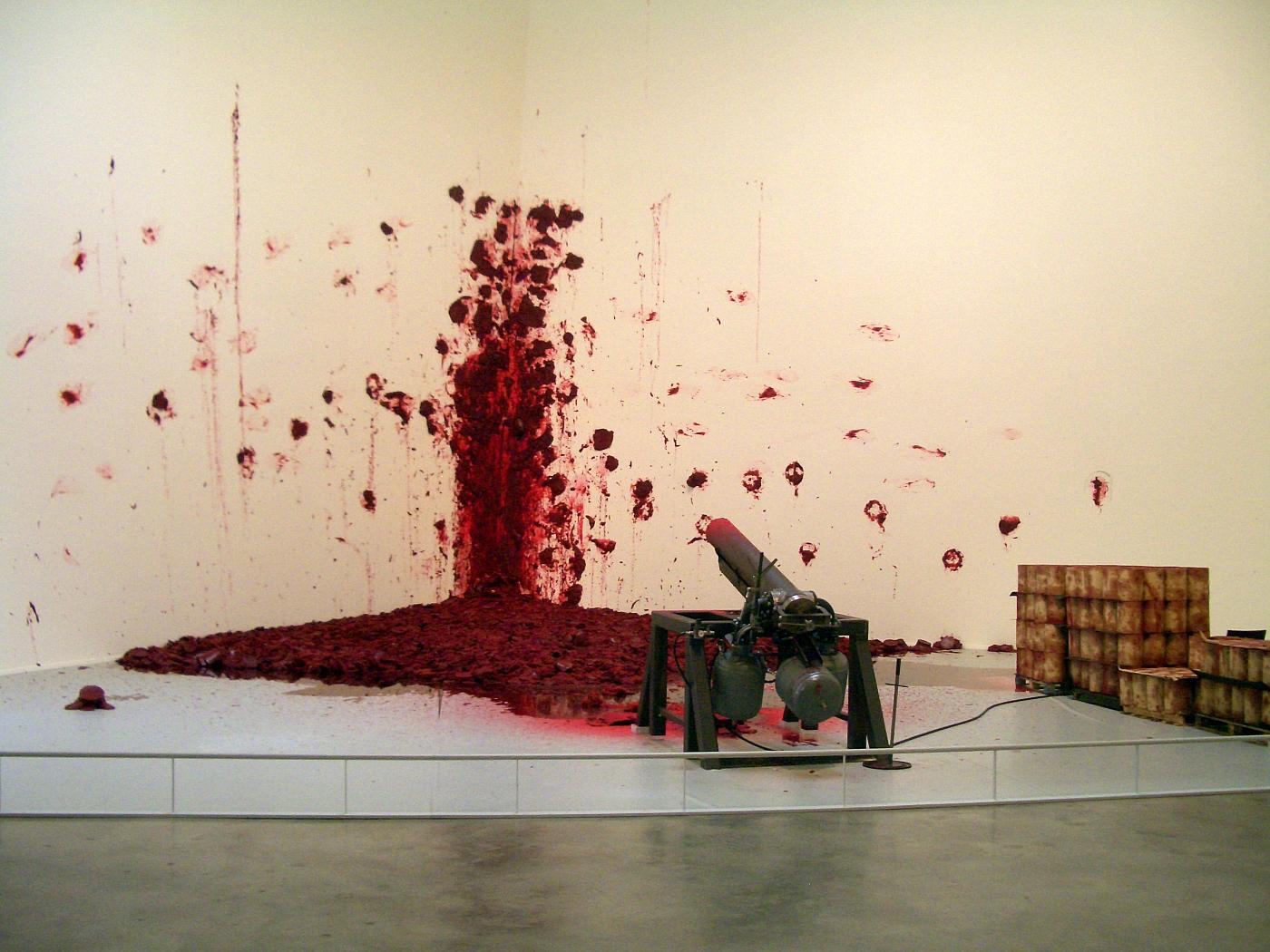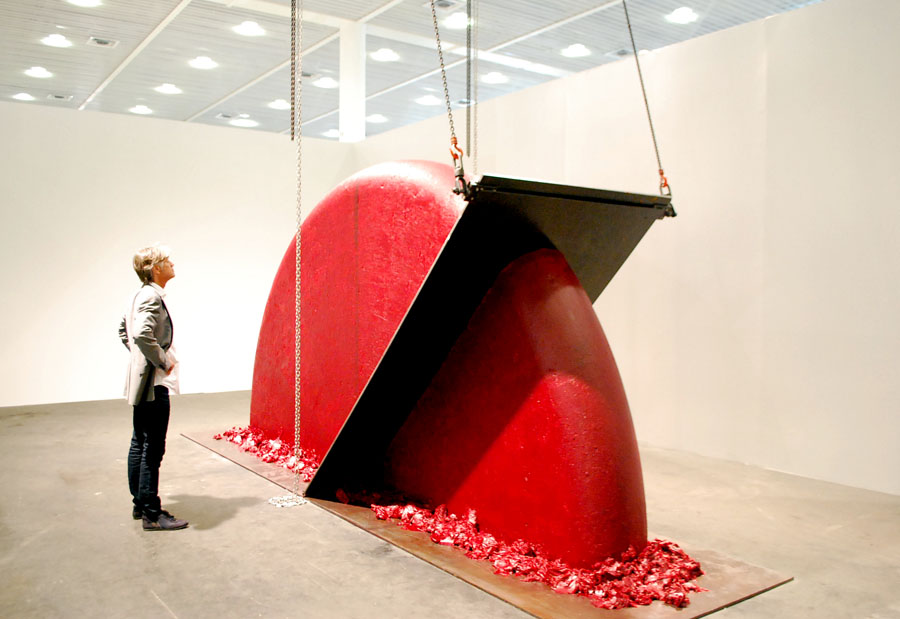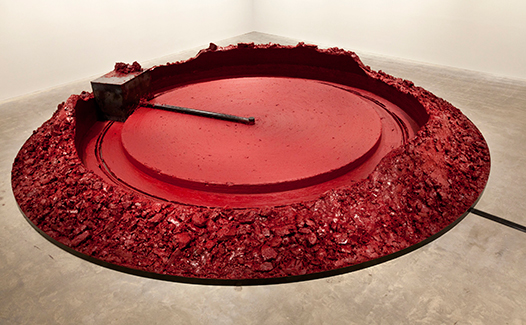Big cannon which shoots wax to the corner of the gallery, huge mirror bean in the Cloud Gate park which weighs 110 tons and attracts masses of interested visitors from all over the world. These are the works of a British artist of an Indian descent Anish Kapoor. So, if you ever visit Chicago, you must take a photo-shoot of your reflection on the huge mirror bean made of 168 polished stainless steel plates.
Anish Kapoor is one of the most influential sculptors of his generation. Born in Bombay, India, he has lived and worked in London since the early 70’s. Artist has said about his origin: „I am Indian and i am proud of it. Indian life is mythological rich and powerful.“ Kapoor sees his work as being engaged with the deep-rooted metaphysical polarities: presence and absence, being and non-being, place and non-place, the solid and the intangible. Throughout Kapoor’s sculptures his fascination with darkness and light is apparent; the absorbent nature of the pigment, the radiant glow of alabaster and the fluid reflections of stainless steel and water. Through this interplay between form and light, Kapoor aspires to evoke sublime experiences, which address primal physical and psychological states.
© nishainpursuit.files.wordpress.com
Anish Kapoor became known in the 1980s for his geometric or biomorphic sculptures made using simple materials such as granite, limestone, marble, pigment and plaster. These early sculptures are frequently simple, curved forms, usually was used monochromatic and brightly colours, also using powder pigment to define and permeate the form. Author says about his early works:
“While making the pigment pieces, it occurred to me that they all form themselves out of each other. So I decided to give them a generic title “A Thousand Names“implying infinity, a thousand being a symbolic number. The powder works sat on the floor or projected from the wall. The powder on the floor defines the surface of the floor and the objects appear to be partially submerged, like icebergs. That seems to fit inside the idea of something being partially there.”
© we-find-wilderness.com
Such use of pigment characterized his first high profile exhibit as part of the New Sculpture exhibition at the Hayward Gallery London in 1978.
Exhibition at the Royal Academy of Arts
In September 2009, Kapoor was the first living artist to have a solo exhibition at the Royal Academy of Arts. As well as surveying his career to date it also included new works. On display were “Non-Object“ mirror works, cement sculptures previously unseen, and “Shooting into the Corner“ a cannon that fires pellets of wax into the corner of the gallery. Previously shown at MAK, Vienna in January 2009, this work demonstrate dramatic presence and associations and also continues Kapoor’s interest in the self-made object, as the wax builds up on the walls and floor of the gallery the work slowly oozes out its form.
© fluorodigital.com
Kapoor about his art
When asked if engagement with people and places is the key to successful public art, Kapoor said:
“I’m thinking about the mythical wonders of the world, the Hanging Gardens of Babylon and the Tower of Babel. It’s as if the collective will comes up with something that has resonance on an individual level and so becomes mythic. I can claim to take that as a model for a way of thinking. Art can do it, and I’m going to have a damn good go. I want to occupy the territory, but the territory is an idea and a way of thinking as much as a context that generates objects.” Also artist have said that, “artists don‘t make objects. Artists make mythologies. “.







